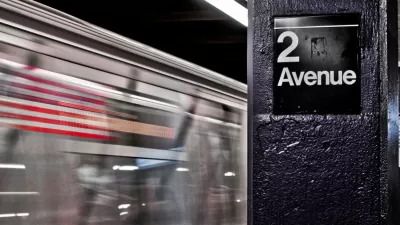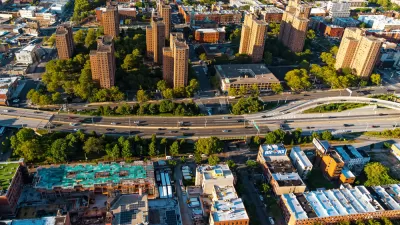With the MTA comprising a significant portion of the city's workforce and viability, NYC mayoral candidates remain reluctant to commit to invest in the transit authority. Their comments at a recent transit forum disappointed advocates.
The next mayor of New York City will inherit 100-year-old transit infrastructure and a radical shift in commute patterns. Rather than commuting into Manhattan, New Yorkers are doing a lot more intra-borough commuting, increasing their reliance on buses to get around.
Mayoral candidates appeared at a forum on transportation last month, but rather than discussing visionary, large-scale infrastructure projects, they discussed peripherals and were hesitant to commit to spending projects.
Mayor Bloomberg will be leaving behind an active transit legacy, albeit a Manhattan- and private developer-centric legacy (according to critics), having spearheaded the extension of the 7 train line, the planning of seven BRT routes (two are already up and running), an expanded network of bike lanes and his failed congestion pricing plan.
Transit experts responding to the lukewarm stance of mayoral candidates at the transit conference think this would be a good time for the city to invest in long-term infrastructure, such as the Triboro RX, a proposed rail connection between the Bronx, Queens and Brooklyn along an existing right-of-way.
The city faces the added challenge of having no direct oversight over the MTA, which is run by the state with little regard for the transit authority's dwindling funds and substantial debt, critics say. However, the city can choose to invest in expanded services like BRT and in reducing the cost of public transport, experts say.
FULL STORY: The mayoral race and the state of transit in new york

Alabama: Trump Terminates Settlements for Black Communities Harmed By Raw Sewage
Trump deemed the landmark civil rights agreement “illegal DEI and environmental justice policy.”

Planetizen Federal Action Tracker
A weekly monitor of how Trump’s orders and actions are impacting planners and planning in America.

The 120 Year Old Tiny Home Villages That Sheltered San Francisco’s Earthquake Refugees
More than a century ago, San Francisco mobilized to house thousands of residents displaced by the 1906 earthquake. Could their strategy offer a model for the present?

In Both Crashes and Crime, Public Transportation is Far Safer than Driving
Contrary to popular assumptions, public transportation has far lower crash and crime rates than automobile travel. For safer communities, improve and encourage transit travel.

Report: Zoning Reforms Should Complement Nashville’s Ambitious Transit Plan
Without reform, restrictive zoning codes will limit the impact of the city’s planned transit expansion and could exclude some of the residents who depend on transit the most.

Judge Orders Release of Frozen IRA, IIJA Funding
The decision is a victory for environmental groups who charged that freezing funds for critical infrastructure and disaster response programs caused “real and irreparable harm” to communities.
Urban Design for Planners 1: Software Tools
This six-course series explores essential urban design concepts using open source software and equips planners with the tools they need to participate fully in the urban design process.
Planning for Universal Design
Learn the tools for implementing Universal Design in planning regulations.
Clanton & Associates, Inc.
Jessamine County Fiscal Court
Institute for Housing and Urban Development Studies (IHS)
City of Grandview
Harvard GSD Executive Education
Toledo-Lucas County Plan Commissions
Salt Lake City
NYU Wagner Graduate School of Public Service





























